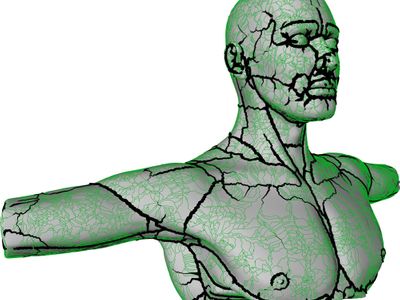The course provides the basics of visualisation and visual communication through technologies, examples, demonstrations and labs in different application fields, such as computer games, medical visualisation, urban planning, information visualisation, image and video processing. The course is both theoretical and practical, interweaving theory with lab assignments. Current tools in the focus areas of the course will be introduced.
DD2258 Introduction to Visualization, Computer Graphics and Image/Video Processing 7.5 credits

This course is the extended version of Introduction to Visualization and Computer Graphics DH2320. It contains the same lectures, homework and exam as DH2320, but also adds a component on image and video processing. Please look at DH2320 to get an overview of the main contents.
This course awards 7.5hp and is graded A-F.
Information per course offering
Information for Spring 2025 visintro24 programme students
- Course location
KTH Campus
- Duration
- 14 Jan 2025 - 16 Mar 2025
- Periods
- P3 (7.5 hp)
- Pace of study
50%
- Application code
60274
- Form of study
Normal Daytime
- Language of instruction
English
- Course memo
- Course memo is not published
- Number of places
Places are not limited
- Target group
Open to all programmes from year 3 and for students admitted to a master's programme as long as it can be included in your programme.
- Planned modular schedule
- [object Object]
- Schedule
Contact
Course syllabus as PDF
Please note: all information from the Course syllabus is available on this page in an accessible format.
Course syllabus DD2258 (Spring 2025–)Content and learning outcomes
Course contents
Intended learning outcomes
Having passed the course, the student should be able to
- account for fundamental concepts in computer graphics such as transformations, lighting models, hidden surface removal and rendering
- explain the principles of some basic algorithms for computer graphics and to some extent compare and evaluate these algorithms
- explain and apply basic principles in interaction programming
- explain basic concepts in information visualisation and scientific visualisation
- explain basic concepts in image and video processing.
Literature and preparations
Specific prerequisites
Knowledge and skills in programming, 6 credits, corresponding to completed course DD1337/DD1310-DD1319/DD1321/DD1331/DD100N/ID1018.
Equipment
Literature
Examination and completion
If the course is discontinued, students may request to be examined during the following two academic years.
Grading scale
Examination
- TENA - Written exam, 7.5 credits, grading scale: A, B, C, D, E, FX, F
Based on recommendation from KTH’s coordinator for disabilities, the examiner will decide how to adapt an examination for students with documented disability.
The examiner may apply another examination format when re-examining individual students.
Opportunity to complete the requirements via supplementary examination
Opportunity to raise an approved grade via renewed examination
Examiner
Ethical approach
- All members of a group are responsible for the group's work.
- In any assessment, every student shall honestly disclose any help received and sources used.
- In an oral assessment, every student shall be able to present and answer questions about the entire assignment and solution.
Further information
Course room in Canvas
Offered by
Main field of study
Education cycle
Add-on studies
Supplementary information
In this course, the EECS code of honor applies, see:
http://www.kth.se/en/eecs/utbildning/hederskodex